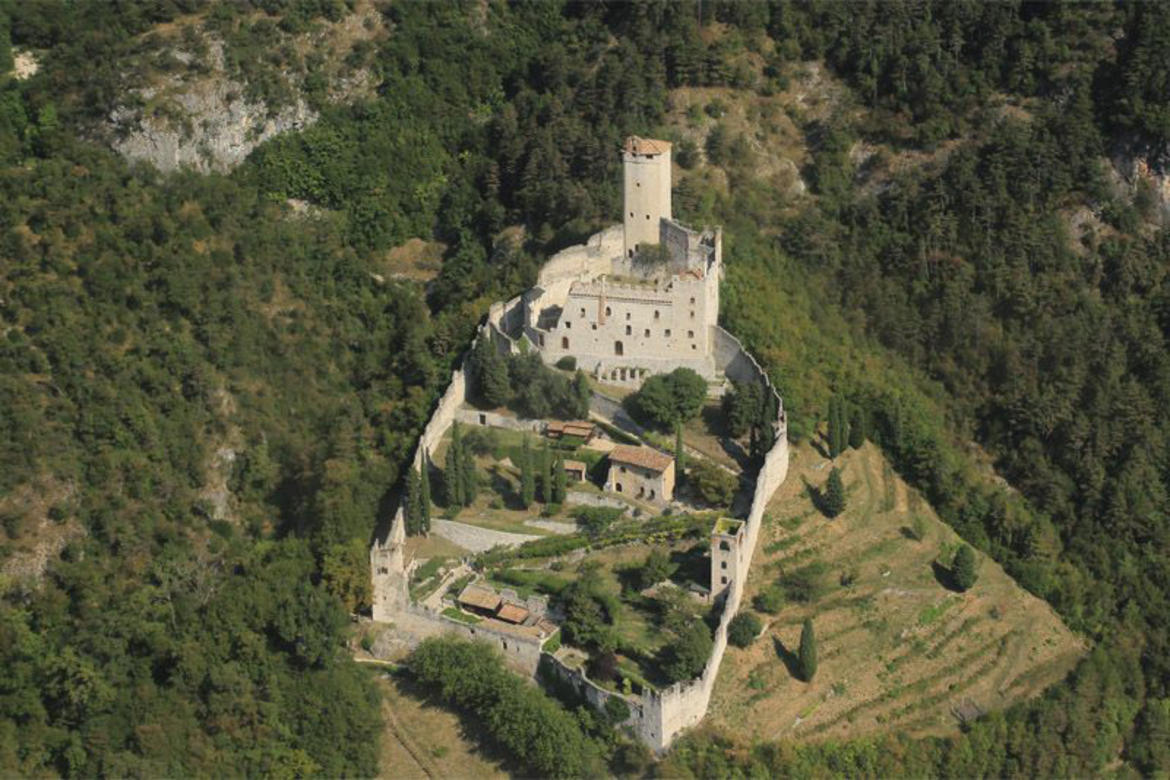Avio castle
The first documented information about the existence of the castle dates back to year 1053.In the 13th century it was owned by the Castelbarco family, who bequeathed it to the Venetians in 1411(until 1508). In the 17th century the castle returned to the Castelbarcos, Barons of Gresta, who donated it to the FAI (Italian National Trust) in 1977, which was crucial for the castle's restoration and enhancement.

An evocative Medieval castle, floodlit at night, overlooks the town of Avio.
Surrounded by the hills of the left bank of the river Adige, the Castle of Sabbionara d'Avio has dominated for centuries the lower Val Lagarina, one of the principal historic routes of communication between the Mediterranean South and Northern Europe. It is a vast complex featuring an 11th century keep, five towers, the baron's residence and the 13th century walls. The castle is first mentioned, at the Age of the Longobards, as the home of the newly-wed King Authari and Theodolinda. In the 13th century it was owned by the Castelbarco family, who bequeathed it to the Venetians in 1411. The latter extended it, and decorated the Chapel of St. George, as well as the façade, with the coats of arms of the Doges. In 1509, it was handed over to the Imperial troops of Maximilian I which, later on, pledged it to the Counts of Arco. In the 17th century the castle returned to the Castelbarcos, Barons of Gresta, who have donated it to the FAI (Italian National Trust).
The prominent feature of the castle is the trapezoidal keep with its rounded corners, which hosts the Stanza d'Amore - the Room of Love - decorated with frescoes painted in the courtly style. Next to what remains of the baron's residence is a tower, the Torre della Picadora, which has been transformed into residential unit, and the Casa delle guardie, the guards' quarters, which features an extraordinary cycle of 14th century frescoes depicting military subjects. A stone-paved path through the vineyards leads to the Romanesque gateway of the upper castle, which no longer features the fourth internal quarter. Famous guests of the castle include the Holy Roman Emperors Charles V and Maximilian of Hapsburg.